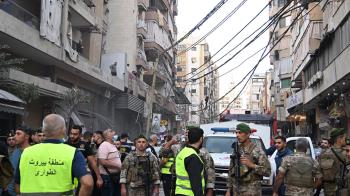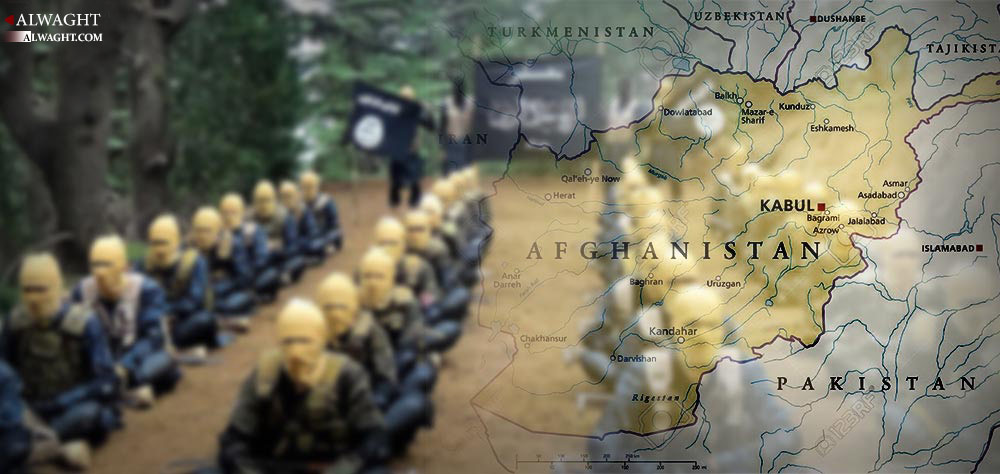Alwaght- It was in mid-April last year that US defense ministry stated it dropped the biggest non-nuclear bomb in Afghanistan. Known as the Mother of All Bombs, or MOAB, the huge bomb allegedly targeted the caves where ISIS militants were hiding in Achin District of Nangarhar province in the south of the country.
Technically known as GBU-43B, the bomb weighs 11 tons and is allegedly the most destructive among the non-nuclear bombs built by other countries. The weapon was initially tested by the US army in 2003, but it was never used in a real military operation, even when the country invaded Iraq in the same year.
However, last year, the US military claimed that MOAB was used for the first time for a combat aim when it was fired at the positions of the ISIS terrorist group.
The images of the strike showed tremendous impact of the bomb. Shortly after the missile raid, the Americans announced that they managed to fully demolish the underground tunnels used by the terrorist organization which is increasingly gaining ground in the war-torn nation.
With regard to the Americans' claims, the simple expectation was that the Achin attack dealt a fatal blow to ISIS and largely impaired it. But after a year, the developments on the Afghan ground prove the opposite.
ISIS expands movement in Afghanistan a year after the much-vaunted attack
A month before the missile strike last year, the Institute for the Study of War, a US-based think tank, had suggested that some 5,000 militants loyal to ISIS existed in Afghan territories. A year after the report, Zamir Kabulov, the Russian president’s envoy to Afghanistan, set off the alarm bells about ISIS spread in Afghanistan, holding that the terrorist group’s members in Afghanistan touched 10,000. The Russian diplomat further commented about the origin of the fighters, saying that they mostly were transferred from Syria and Iraq, two regional hot spots and where the group first emerged in late 2013.
The Russian diplomat was not the only official to warn. Even Afghanistan's local officials admit that ISIS is expanding its toehold in their country. Nine months after MOAB attack, Attaulah Khogyani, the spokesman to the Nangarhar's governor, in his interview with the Turkish Anadolu news agency said that at least 12,000 families had fled their homes in the province for the fear of attacks by ISIS.
A little before the spokesman's remarks, Mohammad Safi, the head of Kunar province’s provincial council, expressed concerns about ISIS spread in the province, saying that within four months the group recruited between 3,000 and 4,000 locals in a network broadening campaign.
A look at the ISIS activities map in Afghanistan shows that the group have started its penetration into Afghanistan from the eastern part, and now has stretched west and northward. In the past few months, ISIS fighters clashed with the local security forces as well as Taliban militant group in Sar-e Pol and Helmand provinces, signaling that it has built its presence in northwestern and southern Afghanistan.
The question is now about the US supposed role in Afghanistan. Has the US troops' presence prevented expansion of ISIS in Afghanistan? The answer is absolutely negative.
Afghan government unresolved to fight the terrorist group
Aside from US-led NATO's propaganda about fighting terrorism in Afghanistan, where has been under the military organization's occupation for over 17 years, neither the US-led Western military coalition nor the national unity government of Afghanistan is seriously willing to confront ISIS. Even worse, combating the terror organization has no place in their Afghanistan war strategy. In July last year, the Afghan media reported that ISIS factions killed at least 18 people in Ghor province in central Afghanistan. But the unity government, in a statement, maintained that ISIS did not exist in the region. After the incident, the Afghan President Ashraf Ghani in his remarks dismissed ISIS presence in Afghanistan, saying that the terrorist group's existence was limited to some regions, indicating that the president has never taken ISIS in Afghanistan seriously. Analysts blame this stance on the government's inability to effectively push against ISIS. Indeed, official admission of the ISIS presence in the country by the government will give the rivals a winning card and render it vulnerable to pressures of those questioning its performance and record in home politics.
Foreign forces and ISIS secret links
Foreign forces have never taken serious steps or showed determination to combat ISIS on the Afghan soil. Reports emanating from Afghanistan battlefields hardly speak about encounters between US-led forces and ISIS terrorists.
Even worse, some reports emerge about secret cooperation of the two sideswith the aim of helping ISIS spread across the country to further destabilize the war-torn country, which consequently provides the US and its allies with excuse to remain in Afghanistan for the final aim of influencing Iran and Russia's security environment, specifically in Central Asia.
In December 2017, Abdul Wali Wakil, a member of Nangarhar provincial council, told Afghan website Tolo News that the US fighter jets bombed Taliban’s positions while the group was involved in a confrontation with ISIS terrorist group. Nangarhar’s representative at the national parliament as well as the Russian president’s envoy to Kabul also claimed that US military helicopters transfer ISIS commanders between some parts of Afghanistan overnight.
In a time when ISIS finds nothing seriously hampering its emergence in Afghanistan, its amassment in this largely unstable country is highly expected.
Foreign forces and ISIS interests overlap
For the US, ISIS is an ideal instrument serving its anti-Taliban strategy. While Taliban stress that foreign forces should withdraw from the country, ISIS only strives for setting up its caliphate without challenging the American presence. ISIS presence in Afghanistan plays into the hands of West as it gives justification for the Western military presence and also at the same time does not pose risks the US and NATO troops stationed there.
Additionally, in the past few years, ISIS proved to be careful not to cross the foreign forces' red lines in Afghanistan. Reports of ISIS assaults against the foreign troops is a rare issue in Afghanistan and a majority of the attacks have so far targeted the Afghan civilians, specifically Shiites of the country. Hostility to the religious groups will fuel ethno-sectarian conflicts and forces Afghans and international community to believe foreign force's presence in Afghanistan is a neccessity.
The presence of the US-led coalition and ISIS in Afghanistan has worked to the advantage of the two parties. On the one hand, Washington finds ISIS in a key factor contributing to a campaign of endangering the US rivals such as Iran, Russia, and even China. On the other hand, the terrorists claim they want to unify Afghanistan and other cross-border territories under Wilayat Khorasan (Khorasan Province) of a potential caliphate, giving the West the excuse to continue to stay. The present situation compounds the war and distances prospects of security from Afghanistan.



























